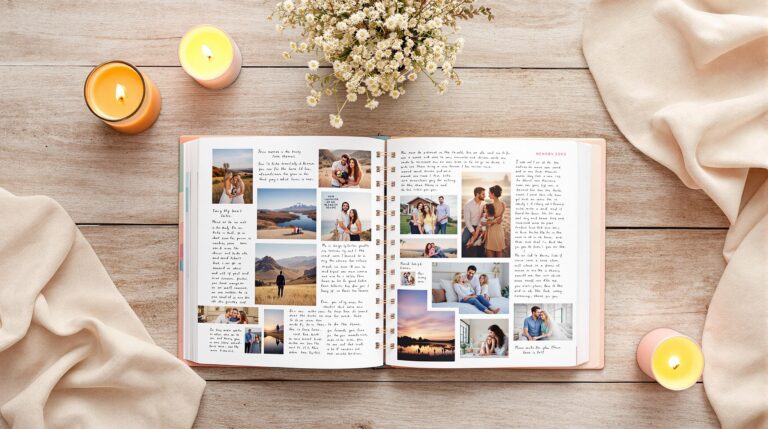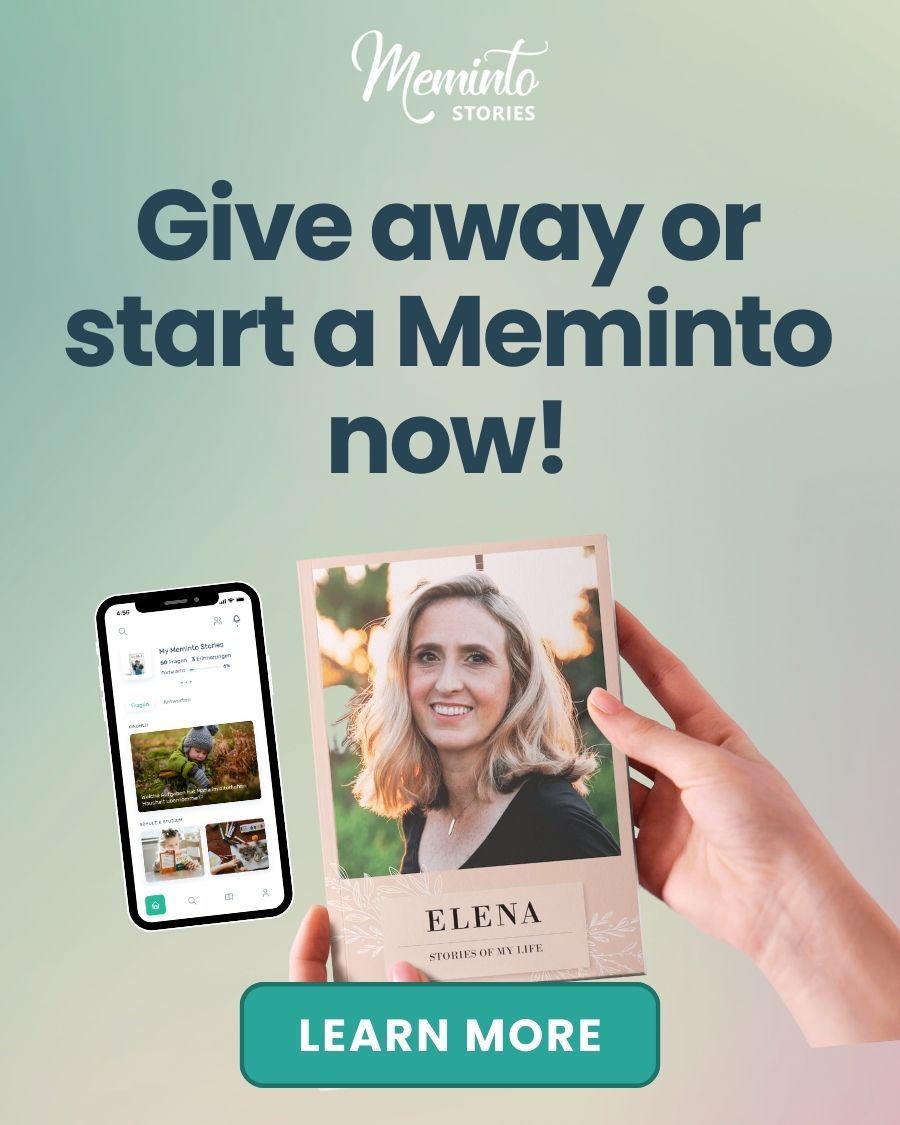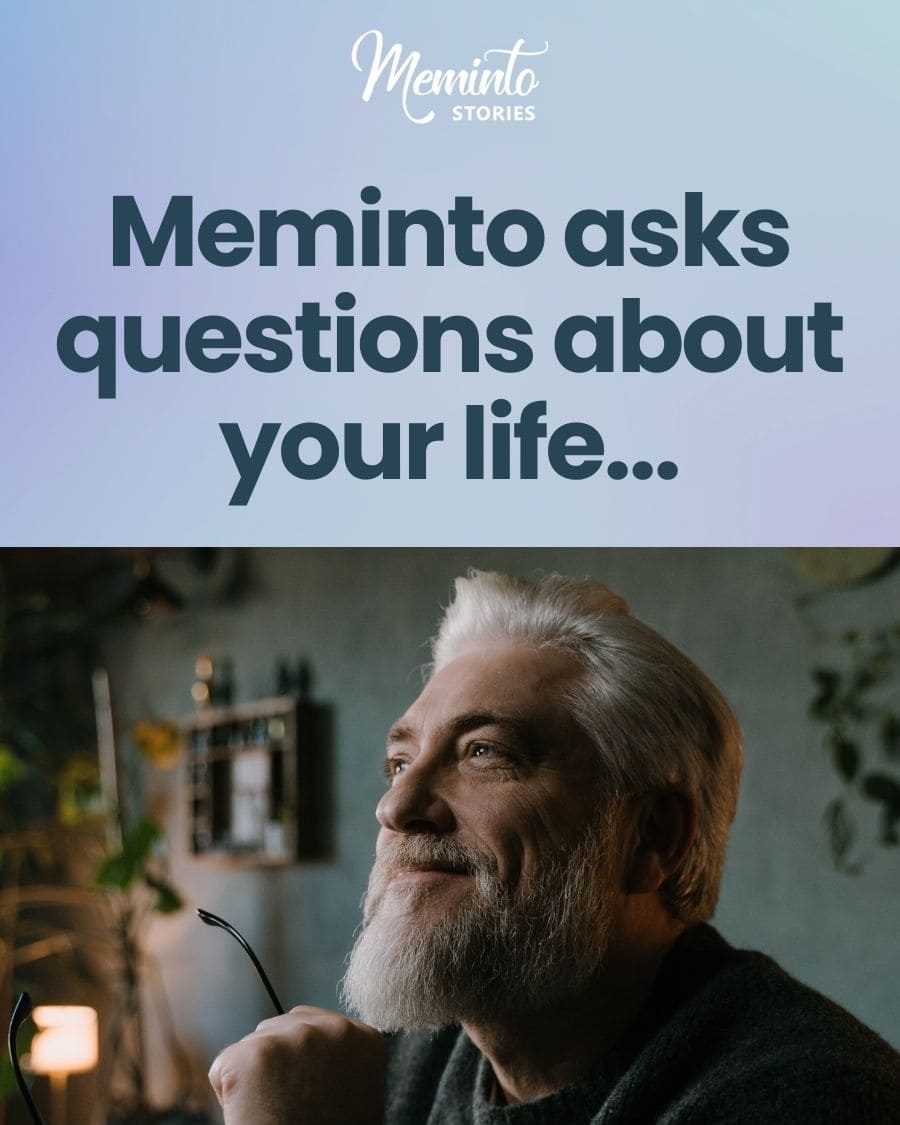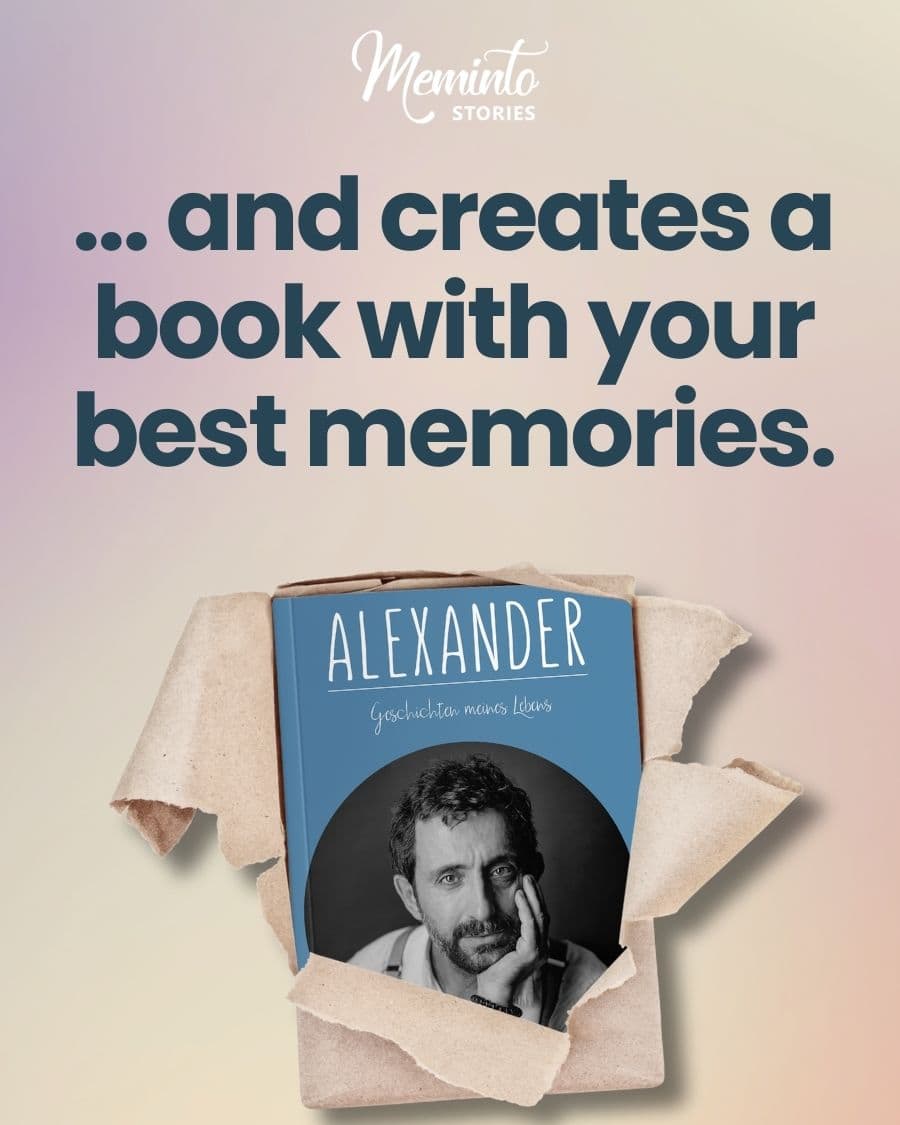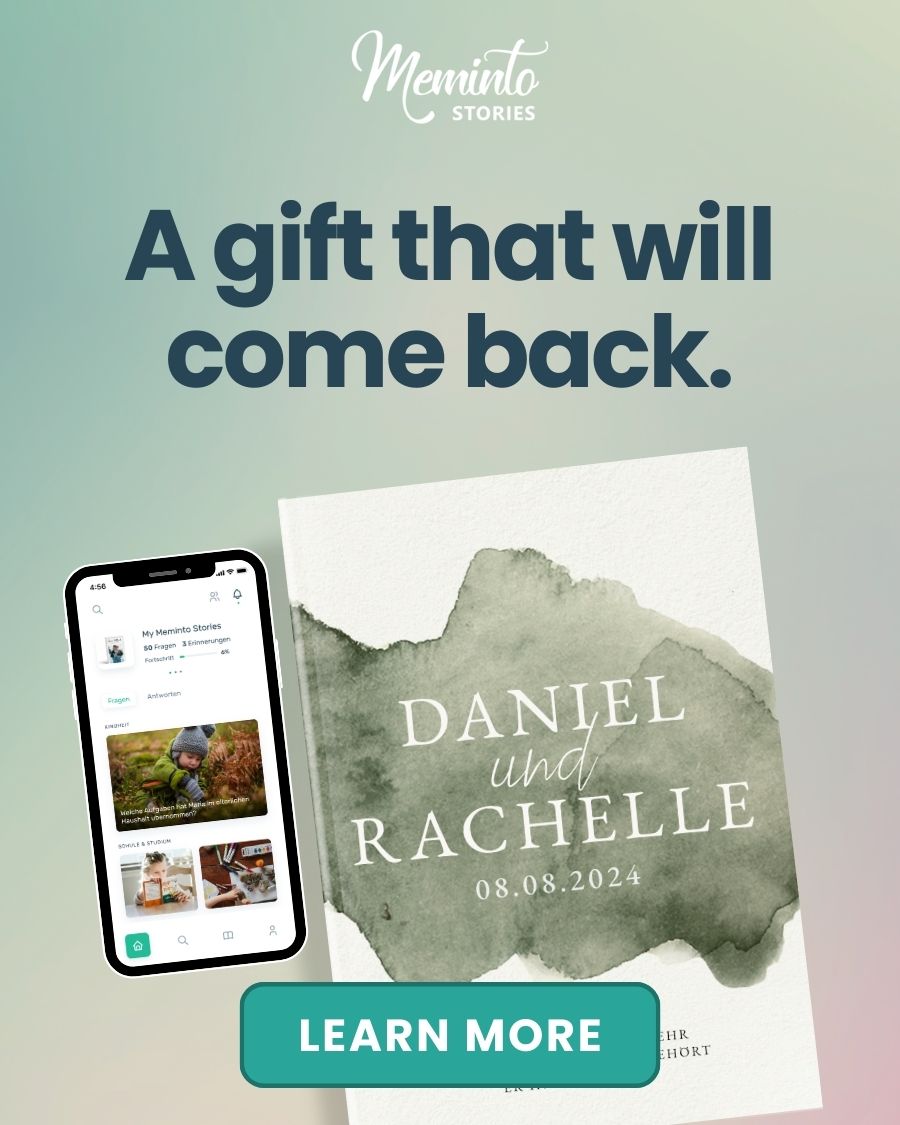I’ve watched people spend twenty minutes in a bookstore comparing paperback vs hardcover, only to choose based on which cover looks better. Then they’re stuck with a format that doesn’t fit their actual reading habits.
The problem isn’t that people don’t care about book formats. It’s that they’re focusing on the wrong factors. While you’re comparing cover designs, you should be thinking about how long this book will last, how easy it is to carry, and whether this book will fit your reading life.
Some people get this right naturally. Werner, who wrote his Meminto book “with just one question per week,” understood that his life story deserved permanent treatment. As he told us, “I am proud of my book and am already preparing the second book.” Different books need different treatment based on what they mean to you.
We’ll show you the hidden costs most readers miss, explain what really matters for each format, and give you a simple way to choose based on how you actually read. Consider this your guide to making smart format choices.
Why most people choose the wrong book format
Most people make format decisions the same way they pick cereal in the grocery store, based on whatever catches their eye first or costs less, without thinking about how they’ll actually use it.
I watch this happen all the time. The problem isn’t that people don’t care about books. It’s that they’ve never learned to think about format as anything more than a price choice. You walk into a bookstore, see two books at different prices, and your brain goes straight to “cheap vs expensive” instead of “what will work better for my life.”
The book industry makes this worse because most advice treats format choice like picking ice cream flavors. But format isn’t about what you prefer. It’s about how the book will be used, how long it needs to last, and what purpose it serves in your life.
Last month, I watched someone spend ten minutes comparing the same book in both formats. She checked the price, felt the weight, even smelled the pages. Then she picked paperback because “it’s the same book for half the price.” But she was buying it for her book club, where six people would handle it, write in it, and pass it around for months. Three weeks later, that book might be falling apart if not handled carefully.
Most people use the same thinking for every book purchase. They treat a family story the same as a throwaway novel. The result is expensive hardcovers sitting unused because they’re too heavy, or important books falling apart because paperback wasn’t built for the love they received.
The real reason people choose wrong isn’t because they’re careless. It’s because they’re using buying rules meant for entertainment books on books that actually matter to their lives.
Paperback vs Hardcover: Complete comparison
Most people walk into bookstores and pick book format based only on price. That’s like buying a car by looking at just the sticker price. You need to see the whole picture before you know what you’re getting.
The differences between paperback and hardcover go way beyond price. Understanding them helps you make the right choice for each book in your life.
| Feature | Paperback | Hardcover |
| Cost | $8-18 usually | $20-35 usually |
| Durability | 3-10 reads before wear or tear | 50+ reads, lasts for years |
| Portability | Light, fits in bags easily | Heavy, needs more space |
| Aesthetic Appeal | Casual, flexible cover | Premium looking, solid spine |
| Reading Comfort | Easy to hold and bend pages | Sturdy but heavier to hold |
Now let’s break down each of these features so you can see what matters for your situation.
Cost
That $12 paperback versus $28 hardcover difference seems obvious until you think about replacement costs. If you’re buying something you’ll read multiple times or share with family, you might buy the same paperback three times over the years as copies wear out or get lost.
For books that truly matter to you, hardcover becomes an investment rather than an expense. The extra money makes sense when spread across years of use and multiple family members enjoying it over time.
Durability
Paperbacks handle normal reading just fine, but they don’t survive heavy use. Pages start coming loose after being read several times, covers get bent and torn from being carried around, and the spine cracks if you open books wide while reading.
Hardcovers can take decades of handling and still look good on the shelf. If this book is to be treasured, referenced often, or passed down to others, hardcover durability becomes essential. When you’re making something meant to last through family gatherings and special moments, the book’s build quality makes all the difference.
Portability
If you read during commutes, while traveling, or anywhere you need to carry books around, a paperback wins on convenience. They fit in purses, backpacks, and jacket pockets without adding much weight or bulk to your daily routine.
Hardcovers need more space and add noticeable weight to your bag. For bedtime reading, that weight becomes uncomfortable when you’re trying to read lying down, making a paperback the practical choice for late-night sessions.
Aesthetic appeal
Hardcovers look impressive on shelves and feel substantial in your hands. If you’re building a personal library or buying books as gifts, that visual impact makes a real difference in how the book is perceived and valued.
Paperbacks look more casual and temporary. They’re perfect for entertainment reading, but might not send the right message if you’re giving someone a meaningful book as a gift or creating something for long-term display.
Reading comfort
Some people love the flexibility of paperback pages and the lighter weight. Others prefer the sturdiness of hardcover pages that stay flat and don’t bend accidentally when you’re trying to read.
Your reading habits matter here. If you highlight, take notes, or frequently flip back and forth between pages, hardcover pages handle that better than paperback ones, which can tear or crease easily with heavy annotation.
Pros and Cons
When you’re weighing paperback against hardcover, the advantages and disadvantages become clear once you line them up side by side.
Paperback
Paperback makes sense when you need convenience and affordability. It’s the practical choice for most everyday reading situations.
| Paperback Pros | Paperback Cons |
| Lower cost means you can buy more books | Falls apart with heavy use and repeated reading |
| Lightweight and easy to carry anywhere | Looks cheap as gifts or important presentations |
| Flexible pages bend without breaking | Pages tear easily when you highlight or take notes |
| Less guilt about lending or losing them | Shorter lifespan means replacing favorites |
| Fits in small bags and tight spaces | Spine cracks when you open books wide |
Hardcover
Hardcover works better when you’re investing in something permanent. It’s built for books that matter enough to keep and treasure.
| Hardcover Pros | Hardcover Cons |
| Lasts for decades with proper care | Higher cost limits how many you can buy |
| Looks premium and impressive on shelves | Heavy to carry in bags or while traveling |
| Handles repeated reading without damage | Uncomfortable for bed reading sessions |
| Perfect for gifts and special occasions | Takes more storage space on shelves |
| Pages stay flat and don’t bend accidentally | Makes you nervous about lending to others |
You’ll know which to pick when you match the format to the book’s purpose in your life. Temporary entertainment gets a temporary format. Permanent value deserves permanent format, which is why Meminto only offers hardcover for their books irrespespective of the theme because these books are meant to become treasured family heirlooms, not disposable reading material.
Which format actually saves you money long-term?
Most people think paperback always wins on cost, but when you factor in the real economics of book ownership, the math gets more complicated than that sticker price comparison.
The resale value reality check
Paperbacks lose value faster than a new car driving off the lot. A $15.99 paperback might fetch $2-4 at a used bookstore if you’re lucky, assuming it’s still in decent shape. Hardcovers hold their value significantly better, often retaining 20-30% of their original price even after multiple reads.
The “resale value” of your family’s story isn’t measured in dollars. It’s measured in whether future generations can still read it. Maria learned this when she told us “I initially wanted to document my life for my children. Thanks to Meminto’s insightful questions and prompt support, my story flourished into over 300 pages across two volumes.” A paperback family history falling apart after five years doesn’t just lose monetary value; it loses content you can never replace.
The hidden cost of book damage
Most format advice misses this completely. They’ll tell you paperbacks are cheaper, but they won’t mention that paperbacks have a shelf life that’s shorter than most people’s attachment to books they care about.
The average lifespan of a paperback with regular handling is 3-5 reads before you see wear and 10-15 reads before the pages start to come loose. The average hardcover lifespan extends to 50+ reads with little wear and years of shelf life when properly stored. When you’re dealing with books you’ll read many times or want to share with multiple family members, that durability difference becomes a real cost factor.
Consider what Willi discovered when creating his family keepsake: “I wrote my Meminto Stories book mainly as a keepsake for my grandchildren and great-grandchildren. Not only was it a breeze to do, but it was a lot of fun.” Books meant for generations need the durability that matches their importance.
The subscription trap nobody talks about
Most memoir services lock you into ongoing costs that make hardcover books look cheap by comparison. StoryWorth charges $99 annually, which is $198 over two years, just to create one book, plus $69 for each additional copy you want to share with family.
Meminto’s one-time model shows how much these subscriptions actually cost because their $99-149 hardcover books include everything StoryWorth charges annually for, plus advanced features like multimedia integration and full-color printing. Over the typical two-year creation period, you’re looking at roughly 50% savings while getting a superior product.
The real cost-per-use calculation
Look at the real costs for books that matter to your life, and format choice becomes about cost per meaningful interaction, not cost per purchase.
A $25 hardcover that gets referenced, shared, and treasured for years delivers better value than a $15 paperback that becomes unreadable after six months of family handling. But a $15 paperback beach read that gets enjoyed once and then forgotten makes more sense than paying hardcover prices for disposable entertainment.
What works is matching the format investment to the content’s actual role in your life. Temporary entertainment gets temporary formats. Permanent value deserves permanent formats.
Barbara understood this when she created her memorial book with recordings of her late mother. She told us, “Now I listen to it from the book every time I miss her.” That’s not a cost-per-use calculation you can put a price on, but it’s definitely not a paperback moment.
The best choice for your reading style
Your reading habits show everything about which format will work in your life, but most people never think about connecting their behavior to their format choices.
The commuter reader
If you’re stuffing books into bags, reading on trains, or holding them while standing, a paperback becomes your only real option. That extra pound of hardcover weight turns into torture after thirty minutes of having it above your head on a crowded subway.
But commuter readers who highlight and take notes find their paperbacks fall apart fast. The constant folding, writing, and bag stuffing means these books don’t last long if you’re using them as reference material.
The bedtime reader
Hardcovers become actual pain when you’re reading lying down. The weight pressing against your chest, trying to hold it at the right angle without your arms falling asleep, that moment when you nod off, and it hits you in the face. Paperbacks just make bedtime reading easier.
But this can sometimes get complicated if you’re someone who re-reads the same books multiple times. Buying a paperback for bed comfort means replacing your favorite books when they fall apart from repeated handling over the years.
The lender
Nobody wants to lend expensive hardcovers, but nobody wants to borrow beat-up paperbacks either. Close friends might get hardcover access, but most people get paperback copies you don’t mind losing.
Smart readers solve this by buying two copies on purpose. One nice hardcover for keeping, one paperback for lending out. The lending copy protects your permanent collection from coming back damaged or not coming back at all.
The gift giver
Paperbacks feel cheap as gifts, but hardcovers can backfire if the person won’t reread them. A $30 hardcover for someone who reads once and moves on just shows you don’t understand their habits.
The format should match the person. A carefully picked paperback for a speed reader shows you understand their style. A hardcover coffee table book for someone who rarely reads shows that you know their lifestyle.
The family story creator
People who are preserving family memories, life stories, or creating books for future generations have different needs than regular readers. These aren’t entertainment purchases. Rather, they’re family treasures meant to last for decades and be passed down through generations.
When you’re creating something that captures voices, memories, and stories that matter to your family’s future, paperback simply can’t deliver the permanence and respect these stories deserve. The choice becomes clear because you’re not just buying a book, you’re creating a family heirloom.
Our recommendation: Making the right choice for your situation
The smart approach isn’t choosing one format over the other. It’s matching each book to what it actually means in your life.
Most people get this backwards by picking a format they like and using it for everything. This leads to expensive hardcovers sitting around unused or favorite paperbacks falling apart from too much love. Be honest about what each book means to you and how you’ll really use it.
Choose paperback when:
- You’re reading for fun once and moving on
- You need something light for trips or daily commutes
- You’re trying new writers and aren’t sure you’ll love them
- Money is tight and you want several books
- You’re buying books just for lending to others
Choose hardcover when:
- You’ll read this book again or share it with family
- You’re building a library you want to keep
- The book is a gift for someone important
- You plan to write notes or highlight a lot
- The stories inside have lasting value you want to save
Once you know the paperback benefits, you can use them smartly for about 80% of your reading, while spending more on hardcover for the 20% that really matters to you.
When it’s family stories or life memories, you already know which to choose. These aren’t fun reading purchases, they’re family treasures. That’s why Meminto makes all their family books in hardcover format because when you’re saving memories for your kids and grandkids, the book needs to match how important the stories are.
Ready to create your own family story book that deserves the hardcover treatment? Start preserving your family’s precious memories with Meminto today and see why thousands of families trust us to create beautiful, lasting books that will be treasured for generations.








